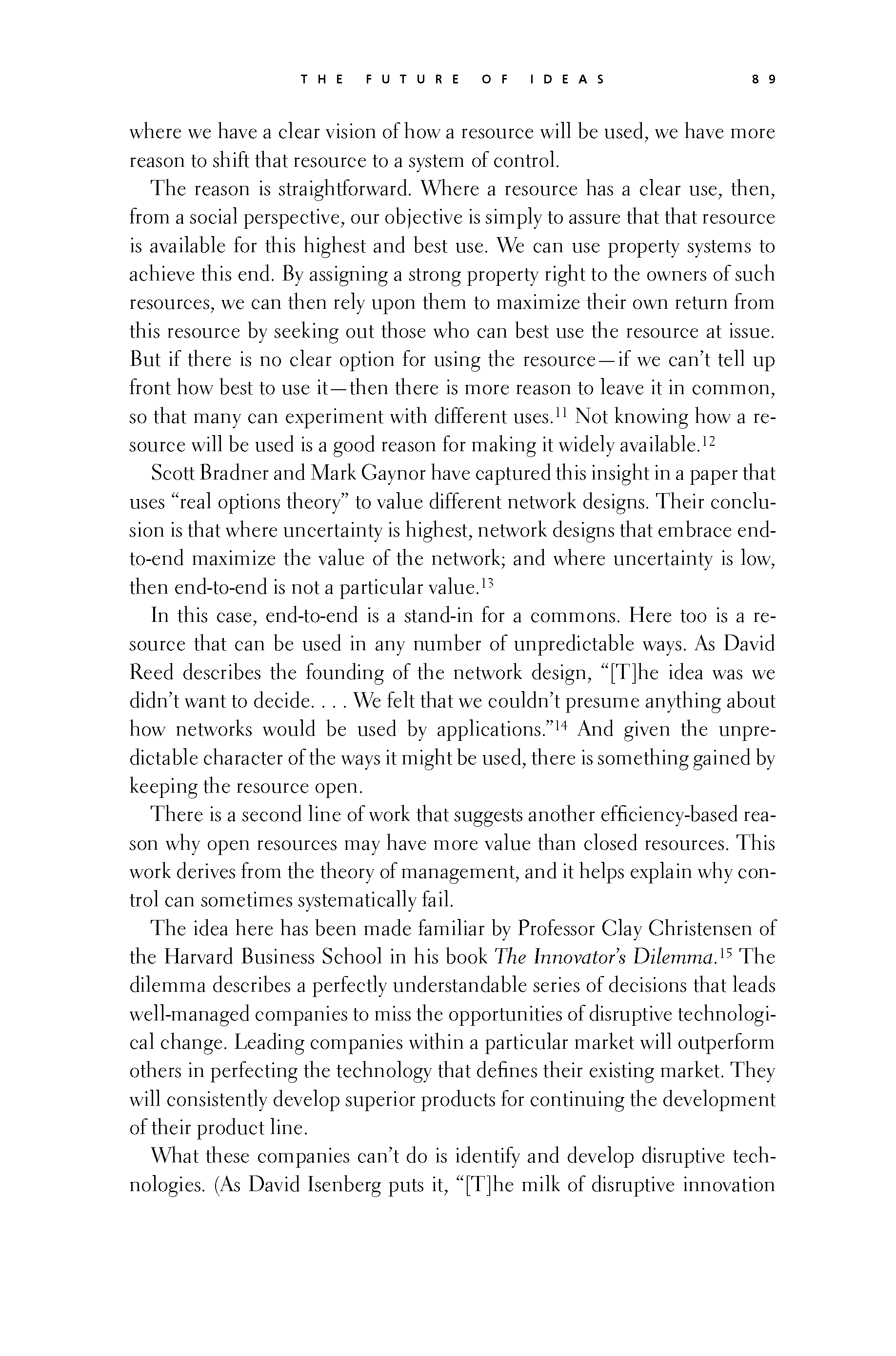 p088 _
-chap- _
toc-1 _
p089w _
toc-2 _
+chap+ _
p090
p088 _
-chap- _
toc-1 _
p089w _
toc-2 _
+chap+ _
p090
where we have a clear vision of how a resource will be used, we have more
reason to shift that resource to a system of control.
The reason is straightforward. Where a resource has a clear use, then,
from a social perspective, our objective is simply to assure that that resource
is available for this highest and best use. We can use property systems to
achieve this end. By assigning a strong property right to the owners of such
resources, we can then rely upon them to maximize their own return from
this resource by seeking out those who can best use the resource at issue.
But if there is no clear option for using the resource -- if we can't tell up
front how best to use it -- then there is more reason to leave it in common,
so that many can experiment with different uses.[6-11] Not knowing how a re-
source will be used is a good reason for making it widely available.[6-12]
Scott Bradner and Mark Gaynor have captured this insight in a paper that
uses "real options theory" to value different network designs. Their conclu-
sion is that where uncertainty is highest, network designs that embrace end-
to-end maximize the value of the network; and where uncertainty is low,
then end-to-end is not a particular value.[6-13]
In this case, end-to-end is a stand-in for a commons. Here too is a re-
source that can be used in any number of unpredictable ways. As David
Reed describes the founding of the network design, "[T]he idea was we
didn't want to decide... We felt that we couldn't presume anything about
how networks would be used by applications."[6-14] And given the unpre-
dictable character of the ways it might be used, there is something gained by
keeping the resource open.
There is a second line of work that suggests another efficiency-based rea-
son why open resources may have more value than closed resources. This
work derives from the theory of management, and it helps explain why con-
trol can sometimes systematically fail.
The idea here has been made familiar by Professor Clay Christensen of
the Harvard Business School in his book _The_Innovator's_Dilemma_.[6-15] The
dilemma describes a perfectly understandable series of decisions that leads
well-managed companies to miss the opportunities of disruptive technologi-
cal change. Leading companies within a particular market will outperform
others in perfecting the technology that defines their existing market. They
will consistently develop superior products for continuing the development
of their product line.
What these companies can't do is identify and develop disruptive tech-
nologies. (As David Isenberg puts it, "[T]he milk of disruptive innovation
[[89]]
p088 _
-chap- _
toc-1 _
p089w _
toc-2 _
+chap+ _
p090